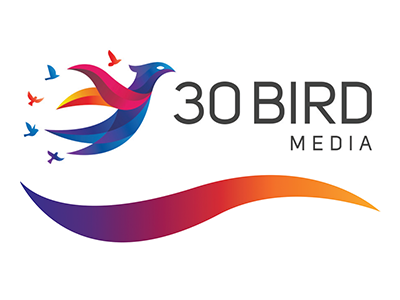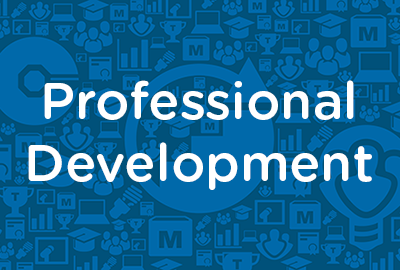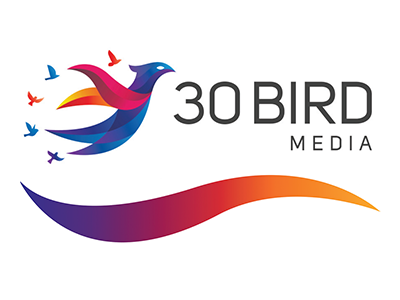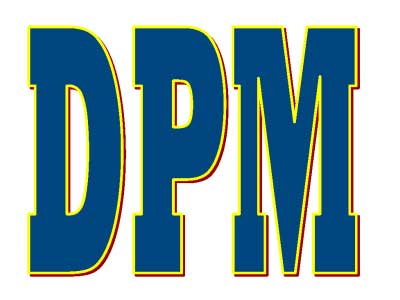 |
Making Plans and Developing Policies |
2.00 |
Planning and policy-making are closely linked to the development of quality school-age care programs. When school-age staff are skilled as planners and policy-makers, they can use these skills to design and implement high quality programs that benefit children, youth, and families. It is essential for school-age care professionals to recognize that it is important for policies to grow out of a vision of quality, and a mission that supports that vision. Therefore, creating a vision for quality, developing a program philosophy, and writing a clear mission statement are the first steps in program planning. It is also important for school-age care professionals to use a systematic process to develop goals and objectives, set priorities for accomplishing goals and objectives, and develop goal-based action plans that will help the school-age program achieve its mission. High quality school-age programs are led by professionals who understand how to use effective strategies for creating a continuous cycle of planning and evaluation that supports ongoing program improvement. |
 |
Mental Health First Aid in the Classroom |
1.00 |
A student shouts in rage, “I wish I were dead!” Is he expressing suicidal ideation? A student quickly covers cut marks over her left forearm. Should we approach her or respect her privacy?
The National Alliance on Mental Illness data show that one in five adolescents between the ages of 13 and 18 will experience a severe mental illness, and only 20 percent will receive treatment. We know, then, that our students are coming to us with mental health needs that are greater than ever before. This can feel overwhelming, especially when we want to help our students achieve to their fullest potential and are not sure how to.
The good news is that basic mental health first aid can offer practical, valuable tools. We don’t need to be a cardiac surgeon to perform CPR, and sometimes CPR can save a life. Similarly, we don’t have to be a licensed mental health professional to provide basic mental health first aid in the classroom.
|
 |
Advanced Interpersonal Communication: Organizational Culture |
1.34 |
An organizational culture is the personality of an organization. This personality is both determined and accepted by the organization’s members. For example, an organization might have a culture that is youthful, energetic, and fast-paced. In this type of culture, decisions are made quickly, and employees are empowered to take action in a wide variety of situations. Another organization might be more straight-laced and policy-oriented. This organization would be much more formal and serious in the way it does business. It is important to recognize and understand the culture of an organization, so that you can determine your fit with the organization.
In this course you will learn: to determine the nature of an organization’s culture, to use the cultural network to your advantage, and identify the characteristics of the roles exhibited in the network, to identify the elements of physical culture that affect interpersonal communication, and to identify the ways in which managers can build a positive culture. |
 |
CompTIA Cloud+ CV0-003 Exam Prep |
1.00 |
Exam Prep to accompany 30 Bird's CompTIA Cloud+ CV0-003 course. |
 |
Safety and Survival in an Active Shooter Event in School Settings |
0.75 |
Welcome to Safety and Survival in an Active Shooter Event in School Settings. Recent national tragedies in schools remind us that the risk is real: an active shooter incident can happen in any place at any time in any school district. The best way to make sure you are safe is to prepare ahead of time and be ready.
Warning: Some of this content may be disturbing, if you need to take a break, please do so. If you exit and then come back into the course later, it will resume where you left off. |
 |
Iceberg Thinking |
0.25 |
This course covers the fundamentals of iceberg thinking. Iceberg thinking is about questioning the world around you. Whether you’re a teacher, student, or self-directed learner, this course explores ideas about everyday life that everyone can relate to. Iceberg thinking is just one of many courses we offer. This course will help you learn about what iceberg thinking is and how it can help you see things differently in your day-to-day life. |
 |
Correcting Performance Problems: Addressing Behavioral Problems (Instructor Guide) |
0.84 |
For a feedback session to be effective, you need to emphasize the impact of the problem behavior to the employee. Their behavior mainly impacts three entities: the organization, co-workers, and the employee. When explaining these factors, you should maintain a proper perspective based on some set guidelines throughout the feedback.
In this course you will learn to: communicate and prevent the discrepancy between an employee’s behavior and performance standards, and identify the type of employee reaction and tackle it effectively.
This Instructor's Edition of this course includes notes and suggestions to assist you in presenting the material, whether in an in-person classroom setting, or as an instructor-led online or distance-learning course. It also provides you with the answers to questions found in mid-lesson activities, as well as in the quiz that concludes the course. |
 |
Managing Performance: Legal Appraisals |
0.84 |
In this course you will learn to: identify legal appraisals and responsibilities in relation to laws enforced by the EEOC, and identify risks of legal challenges and the importance of maintaining positive communication. |
 |
Cross-Cultural Business Communication: Workplace Culture |
1.00 |
Culture is a way of life established by a group of people and passed on to succeeding generations. People within a culture usually share common values, beliefs, and perspectives and have the same language and communication style. Although people within a culture must live in close proximity while the culture is being established, future generations frequently relocate to other countries or regions. This creates situations of cross-cultural exchanges.
As we become increasingly diverse, there is a growing demand for cross‑cultural communication in the workplace. Technology allows us to communicate with peers across the globe, as though they were sitting in our offices. Efficient and cost-effective travel makes it possible to communicate face-to-face with clients in other countries. In addition, companies seeking diverse and highly skilled employees find a conglomeration of cultures among them. As a result, employers are emphasizing cross-cultural communication in their own organizations to prepare employees to work with diverse co-workers and clients.
In this course you will learn to: discuss the value of culture and the significance of cross-cultural communication in the workplace, and describe the impact of cultural differences on communication, and avoid miscommunication and conflicts that arise due to these difference. |
 |
Microsoft Windows 11 |
8.00 |
30 Bird Media's Microsoft Windows 11 course provides the basic knowledge needed to use and perform basic configuration of a computer running Windows 11; this includes basic operating system features, using and installing apps, managing files and common external devices, using network connections and applications, configuring system settings, and personalizing Windows environment and privacy features.
You will benefit most from this course if you are the primary user of a Windows 11 computer and wish to become proficient with its features, but are not yet a power user or computer technician.
This course assumes you are familiar with using a keyboard and mouse, accessing the internet with a web browser, and other basic aspects of using a modern computer. It does not assume you have used earlier editions of Windows or other specific operating systems, or that you have owned or managed a computer before. |
 |
Managing Performance: Appraising Employee Performance (Instructor Guide) |
1.67 |
In this course you will learn to: understand the performance appraisal process, identify and gather appraisal material, prepare for an appraisal discussion, lead employees in an appraisal discussion, and respond to defensive employees and resolve conflict in an appraisal discussion. |
 |
Communicating with Families |
2.00 |
Communication and positive relationships with families improve when program staff recognize family members as partners. Staff can benefit from acknowledging their feelings about families and identifying how these feelings help or hinder working with families. This course provides participants the opportunity to identify their attitudes towards families, consider how their attitudes can enhance or detract from their ability to develop positive relationships with families, and examine how a program’s overall environment supports strong staff-family communication. |
 |
Hazard Communication Basic |
1.00 |
This course covers the basics when it comes to hazard communication. The topics will range from the Hazard Communication Standard to the labeling of hazardous materials. |
 |
Effective Prehospital Patient Handoffs Between Providers |
0.50 |
Effective Prehospital Patient Handoffs Between Providers was designed to provide a common process for reporting patient information during the prehospital care process. Communication of the patient's prehospital care from all level of providers is essential in ensuring the continuation of care in a unified and effective manner and to help provide a seamless transition in their care. This course expands on the idea of effective patient handoffs to the field providers that often transfer patients between various levels of care from first-responder through advanced paramedics. Very often, initial observations of those initial responders are unavailable to subsequent responders - either because the patient has been moved, or the scene itself has been altered. Without an effective process to communicate these details, important information can and will be lost. |
 |
Business Accounting: Stockholders' Equity |
1.50 |
This course will cover how to identify various types of stocks and calculate the value of a corporation’s stock as well as how to use financial ratios to calculate book value and market value per share. You will also learn how to identify the components of stockholders’ equity and report stockholders’ equity on financial statements. |
 |
Customer Service: Customer Service Skills |
1.00 |
A great customer service representative should have skills in three key areas: organization (time and stress management), motivation (letting customers know you care), and communication (vocal, verbal, and visual). The core strength of a good customer service rep is sound knowledge of the organization’s products and services. |
 |
Project Teams: Creating a Project Team (Instructor Guide) |
1.00 |
Project teams and non-project teams are similar because they both often have specific time frames in which to complete tasks. However, project teams also have a time frame for the life of the team, whereas non-project teams usually don’t. A non-project team might be established to monitor the effectiveness of an organization’s advertising. The need to monitor advertising effectiveness will be ongoing, and the team will not have an ending date.
In this course you will learn to: identify the characteristics of a project team, and understand who the project stakeholders are, and understand how individual responsibilities and stress affect a project team, and how team members can evaluate their performance.
This Instructor's Edition of this course includes notes and suggestions to assist you in presenting the material, whether in an in-person classroom setting, or as an instructor-led online or distance-learning course. It also provides you with the answers to questions found in mid-lesson activities, as well as in the quiz that concludes the course. |
 |
GED: Reasoning Through Language Arts - Unit 8: Post-Test |
0.25 |
Welcome to Unit 8: Post-Test. This post-test covers reading comprehension, writing, and editing. At the end of this post-test is a table that matches each question to the content it covers. Use it to review any content that you haven't mastered. |
 |
Organizational Communication: Innovation and Change (Instructor Guide) |
1.00 |
Innovation is a new idea or process that can change the way organizations operate or think. For an idea or process to be considered an innovation, the majority of people who hear about it must consider it new. Implementation of an idea is not necessary for it to be considered an innovation.
Innovation and change are closely related. When an innovation is adopted, it becomes a change. On the other hand, not all change is innovation. If an innovation is rejected after being adopted, the return to the previous method is not an innovation.
In this course you will learn to: identify degrees and characteristics of innovation, and adopt and encourage innovation, and identify the aspects of change.
This Instructor's Edition of this course includes notes and suggestions to assist you in presenting the material, whether in an in-person classroom setting, or as an instructor-led online or distance-learning course. It also provides you with the answers to questions found in mid-lesson activities, as well as in the quiz that concludes the course. |
 |
Leading with Head and Heart |
2.00 |
Those in leadership positions have a responsibility to both lead and manage.During this course, participants will understand the differences between the leadership and management, and the steps we can take to cultivate both. Participants will explore how leaders create safe, supportive environments by modeling self-awareness, interpersonal skills and growth mindset in how we lead and manage. |
 |
Zoom Meeting Basics |
0.50 |
Zoom is a web-based video conferencing tool with a local, desktop client and a mobile app that allows users to meet online, with or without video. Zoom users can choose to record sessions, collaborate on projects, and share or annotate on one another’s screens, all with one easy-to-use platform. In this course we will go through the major features of Zoom Meetings. |
 |
Freelancing 101 |
1.25 |
This course covers the fundamentals of freelancing. Freelancing offers independence, letting individuals choose their projects and schedules, while still providing diverse opportunities to explore different industries and build a flexible career. However, it also entails managing finances, client relationships, and the challenges of inconsistent income. |
 |
Sanitation and Hygiene |
0.25 |
This course covers the proper manufacturing practices to ensure good sanitation, how to achieve proper hygiene among personnel, and how to identify sanitation and health problems in the workplace. |
 |
Cultural Competence for Paraprofessionals |
0.75 |
Culture and cultural elements are essential components of people's identities. Understanding the cultural elements as paraprofessionals allows for a greater appreciation for students and can improve relationships. Cultural elements may include race and ethnicity, gender, and socio-economic status. These elements of culture are not separate from the larger cultural context in which we live and work, especially as paraprofessionals. It is important to recognize that many culturally and linguistically diverse families have specific customs and traditions that may not necessarily be connected to a particular cultural group. By understanding cultural competence, paraprofessionals can provide responsive instruction and support to students from all backgrounds. |
 |
Exploring Four Areas of Development of Children K-6 for Paraprofessionals |
1.00 |
One of the most helpful ways to gain an understanding of the needs and interests of students ages 5-12 is to examine their development from four different perspectives: physical, cognitive, social, and emotional. It is important for paraprofessionals to keep all four of these areas in mind when helping educators implement classroom activities and experiences. Keeping the four areas of development in mind helps staff to better understand the development of the whole child. |


























